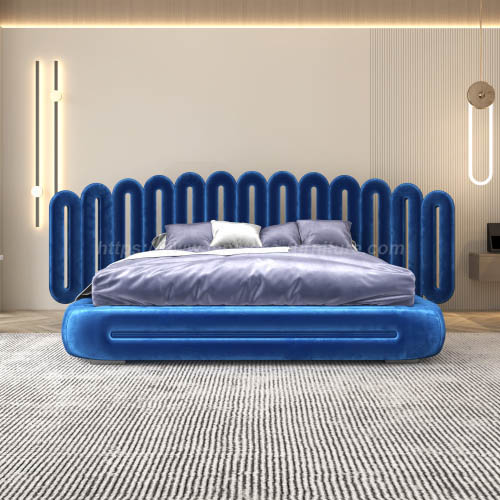Bedroom Furniture Material Selection Suggestions
2025-06-24
When it comes to furnishing a bedroom, the choice of materials plays a crucial role in defining the durability, aesthetic appeal, and comfort of the space. Selecting the right material for bedroom furniture is not only a matter of style but also of practicality, maintenance, and budget. This essay provides suggestions for selecting materials commonly used in bedroom furniture, including wood, metal, glass, upholstery, and engineered materials.
1. Solid Wood: A Classic and Durable Choice
Solid wood remains one of the most popular choices for bedroom furniture due to its natural beauty, strength, and longevity. Common types of wood include oak, maple, cherry, walnut, and pine. Hardwood options like oak and maple are particularly durable and resistant to wear, making them ideal for bed frames, dressers, and nightstands. Softwoods like pine offer a more affordable option while still providing a warm, rustic charm. Wood furniture also offers flexibility in design—from traditional carvings to modern minimalist styles.
2. Engineered Wood: Budget-Friendly and Versatile
Engineered woods such as MDF (Medium-Density Fiberboard), plywood, and particle board are widely used for their affordability and versatility. While they lack the long-term durability of solid wood, they are more cost-effective and often come with laminate or veneer finishes that mimic the look of natural wood. MDF, for instance, provides a smooth surface ideal for painted finishes and is frequently used in headboards, wardrobes, and storage units.
3. Metal: Modern and Minimalist
Metal furniture lends a sleek, contemporary look to bedrooms and is especially favored in industrial and minimalist interior designs. Materials like stainless steel, iron, and aluminum are durable, easy to clean, and resistant to pests. Metal bed frames, for example, offer strong support and a lightweight structure. However, they may lack the warmth of wood and are sometimes less comfortable without proper padding or upholstery.
4. Glass: Stylish Accents
While not typically used for main furniture structures, glass is often incorporated into bedroom pieces such as tabletops, cabinet doors, and decorative accents. Tempered glass is preferred for its strength and safety. Glass elements add a modern, airy touch to the bedroom, reflecting light and enhancing the sense of space. However, glass requires careful handling and frequent cleaning to maintain its clarity and appearance.

5. Upholstered Materials: Comfort and Luxury
Upholstered furniture adds softness and luxury to the bedroom. Fabric and leather are commonly used for bed headboards, benches, and accent chairs. Fabric upholstery offers a wide range of colors and patterns, enhancing the decorative flexibility of a room. Leather and faux leather, while more expensive, bring an upscale, sophisticated touch and are relatively easy to maintain. It's important to consider allergy concerns and cleaning requirements when choosing upholstery.
Conclusion
The selection of materials for bedroom furniture should balance aesthetic preference, durability, maintenance, and budget. Solid wood offers timeless appeal and durability, while engineered wood is practical for budget-conscious buyers. Metal suits modern styles, glass adds elegance, and upholstery introduces comfort and luxury. By understanding the advantages and limitations of each material, homeowners can make informed choices that enhance both the function and beauty of their bedroom spaces.
As a professional manufacturer and supplier, we provide high-quality products. If you are interested in our products or have any questions, please feel free to contact us.


